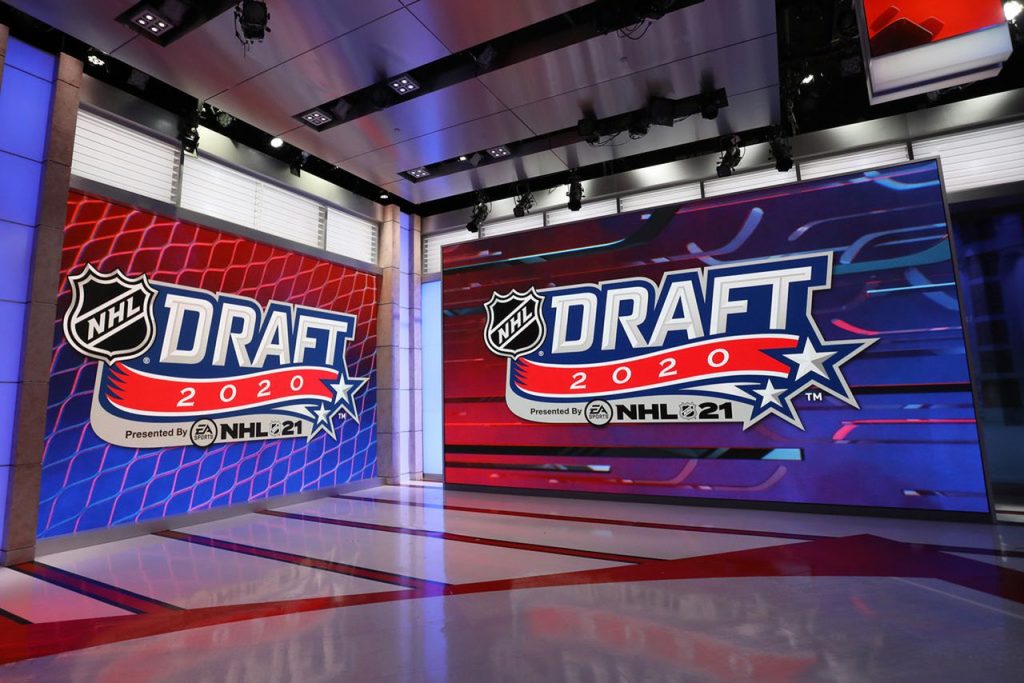A draft is a metagame selection process, used before a game is played, to decide how players are chosen for a team roster. Alternatively, draft rules can be used by players to choose other game options, such as starting locations, turn orders, bonuses, and more. The most common draft form is Rotation Picking (see below) where teams take turns picking one player at a time until all teams fill their rosters.
Table of Contents
Entry Draft
In an entry draft, the losing team from the previous game is first to pick one or more players for their new roster. This allows teams who performed the least to gain an advantage by recruiting some of the top talent to their alliance.
To discourage teams intentionally losing a game or tournament in hopes of gaining the first-choice advantage in the following game, a lottery system is usually implemented. The teams with the lowest scores from the previous game are usually the only teams eligible to participate in the lottery. Winners may either be moved to first place on the draft order (as explained above), or move up a set number of spaces from their current position on the score list. Alternative weighted lottery systems provide extra lottery tickets–and therefore preferential picking–to the worst-playing teams.
Expansion Draft
In an Expansion Draft, each team can pick a set amount of their players that they wish to “protect” from participating in the draft (and thus keep those players on their current team). All other players are eligible for picking, depending on the rules of the draft.
Rotation Picking
In a Rotation Picking draft, each team takes turns picking one player to recruit to their alliance. The order of the turns varies drastically, with a few common forms outlined below:
- Random: The order in which players or teams take turns drafting is decided randomly or pseudo-randomly. For example, a random number generator, dice, lottery, or other random device chooses the list’s order. In Chess, which color a player plays as is usually decided by one player hiding a pawn of each color in each of their hands. The other player picks one of the first player’s hands at random. The color of the chess piece in the chosen hand is the piece that the choosing players plays as.
- Performance: The player or team with the highest (or lowest) score may pick first (see Entry Draft). However, an alternative method involves players or teams earning points based off their overall good sportsmanship or contributions to the game. The quantity of points each player or team accumulates at the end of a tournament or season determines the turn order.
- Last Becomes First: After the last player makes a selection, the draft order is reversed for the next round. The last player then begins the new draft round by making the first-choice, with the order working backwards until the player who initially chose first is now the last to make a second selection. This process continues until each team’s roster is fulfilled.
Divide and Choose
In this method, a list of bonuses, rewards, and other in-game elements are divided into two or more pools by one player or team. The opposing player or team chooses which of the pools they wish to acquire for their side. This method encourages the player or team who is performing the division to make the selection as equal as possible. If they do not, the choosing player or team will choose the more advantageous selection and acquire an advantage over their opponents.
For this method to work, there must be a variety of game elements that can be mixed and matched together into equal sizes.
Auction
Players or teams are allowed to auction for their position on the turn order list. Note that this can have a negative side effect where the team with the most currency is able to buy their way to the top of a list, and thus gain an advantage over the other teams. This can create a runaway winner scenario. See Auctions for an in-depth discussion of various auction types and methodologies.
Ranked Voting
Players or teams can vote using a preferential or ranked ballot to select a number of candidates for their draft, based off which selections the team prefers most.
In ranked voting, each selection a team makes is ordered based off their first preference, second preference, third preference, and so on. A series of rounds elapse where each team is awarded the selection that they chose as their first selection, then their second selection, and so on. If two or more teams tie for the same selection, then another method is used to decide who is the winner (e.g. randomly, auction, etc).
An alternative to this method is where a team who selected a candidate that they didn’t win would have their next choice moved up to their defeated selection. For example, if a team listed player “A” as their first choice but lost their draft to an opposing team, their second choice, player “B”, would be promoted to their highest defeated preference. In other-words, player “B” would become their new first choice.

